Exploring Anime and Manga's Alternate Realities
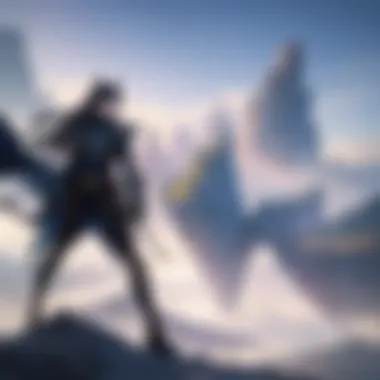
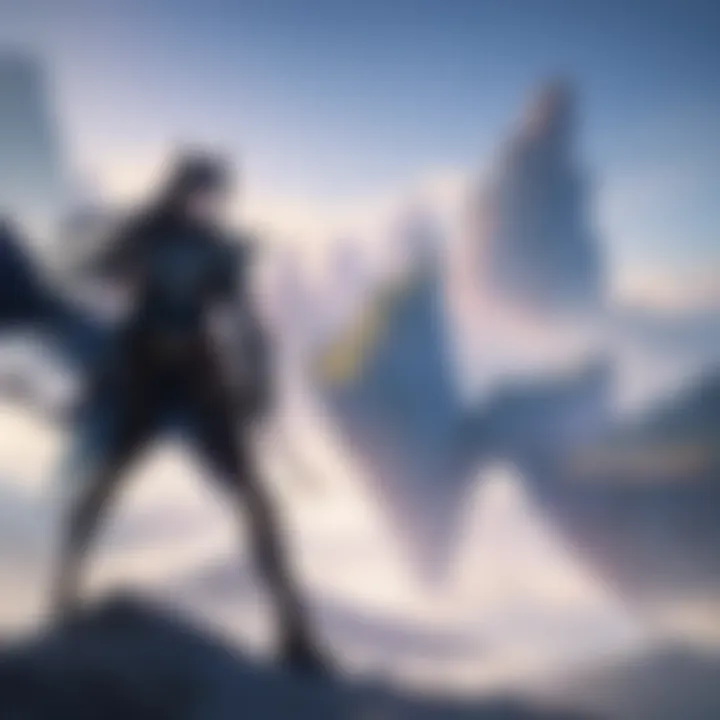
Intro
Anime and manga have gained immense popularity globally, often exploring themes that transcend our reality. One prevalent theme is the concept of alternate worlds. This exploration of other dimensions not only captivates the imagination but also provides a unique lens through which to examine societal norms and individual character journeys. The allure of these narratives lies in their ability to reflect complex realities while simultaneously offering escapism.
Alternate world narratives often include intricate character development, narrative structures, and cultural implications. This article will provide an analysis of various series that embody this theme, offering insights into how they reshape perceptions and reveal deeper truths about the society in which they were created.
This discourse aims to serve both casual viewers and dedicated fans, highlighting specific characteristics of notable series and drawing connections to broader cultural phenomena.
Character Profiles
Overview of Main Characters
In anime and manga that feature alternate worlds, character profiles are often rich and multifaceted. Main characters usually undergo significant transformations as they navigate unfamiliar realms. Whether it’s Kirito from Sword Art Online facing deadly game scenarios or Issei Hyoudou from High School DxD discovering his powers in a world filled with supernatural beings, these characters embody resilience and growth through their adventures.
The emotional depth in their experiences often resonates with viewers, who may see reflections of their own struggles or aspirations. These characters are not just brave heroes; they carry burdens and insecurities that play a crucial role in their development.
Supporting Characters
Supporting characters often enhance the narrative by providing different perspectives. Characters like Rika Shinozaki in Sword Art Online or Akeno Himejima in High School DxD introduce varying dynamics to the main story. Their backgrounds, motivations and coping methods add layers to the overarching narrative, deepening the audience’s understanding of what it means to be human in a fantastical setting.
Unraveling the complexities of supporting characters enriches viewers' engagement with the story. They are what make the world feel populated and real, often challenging or complementing the main character’s journey.
Theme Exploration
Central Themes
The exploration of alternate worlds often involves several central themes. These can include self-discovery, the conflict between good and evil, and the struggle for identity. Characters frequently grapple with their place in a shifting reality, presenting stories about resilience and moral dilemmas. Viewers are shown how individuals react and adapt when faced with extraordinary circumstances.
Cultural References
Moreover, many series embed cultural references that resonate within their narrative. Understanding these references can enhance appreciation and critical analysis. For instance, Re:Zero - Starting Life in Another World touches on themes of psychological distress while reflecting nuances of Japanese societal pressures. Engaging with such cultural elements allows the audience to see parallels between the depicted world and their own realities, challenging them to think critically about their thoughts and behaviors.
Popular Series and Recommendations
Top Anime Series of the Year
To help guide viewers, the following are notable anime series highlighting alternate worlds:
- Attack on Titan - A story filled with unexpected twists and intense battles.
- That Time I Got Reincarnated as a Slime - A unique take on the isekai genre with humor and heart.
Hidden Gems in Manga
While some series garner widespread attention, others remain overlooked. Here are a few hidden gems:
- Ascendance of a Bookworm - A character-driven journey in a low fantasy setting.
- The Rising of the Shield Hero - Offers a compelling narrative rich in themes of betrayal and redemption.
Exploring these series can offer new insights and provoke thought, enriching the viewer’s experience of alternate worlds in anime and manga.
Defining the 'Another World' Genre
The exploration of 'another world' as a genre in anime and manga plays a pivotal role in understanding the narrative landscapes of these mediums. This genre encompasses a range of themes and tropes that create spaces for imagination, experimentation, and the examination of reality itself. By delving into alternative realms, creators can challenge conventional storytelling and provide fresh perspectives on human experience and societal constructs.
In this article, we will define what constitutes the 'another world' genre. This involves dissecting its core elements, benefits, and the considerations that surround its narratives. The genre often invites viewers and readers to step beyond their familiar boundaries, allowing for a blend of adventure, fantasy, and introspection.
Characteristics of Otherworldly Narratives
The narratives that feature alternate worlds are often characterized by specific elements that set them apart from traditional storytelling. Here are some of the key characteristics:
- Parallel Universes: Many works explore universes that run parallel to the real world. Characters may find themselves suddenly transported, confronting both familiar and unfamiliar elements.
- Escapism: The genre often serves as a form of escapism. Viewers can escape the mundane aspects of their lives, immersing themselves in fantastical adventures.
- Heroic Quests: Protagonists frequently embark on quests that involve overcoming challenges. These quests often symbolize personal growth and development.
- Element of Magic: Magic or supernatural elements are typically present, enhancing the sense of wonder and exploration.
The connection between these characteristics helps to shape the viewer's experience, offering a space for reflection on personal and societal issues.
Cultural Roots and Inspirations
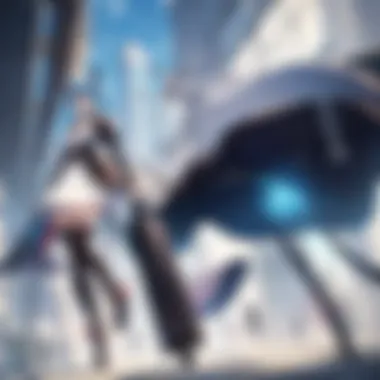
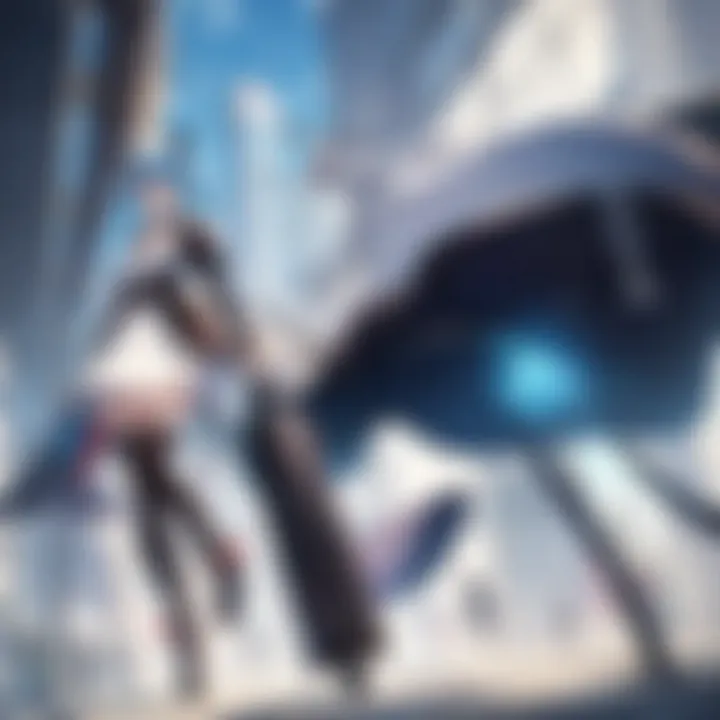
The cultural background of the 'another world' genre is rich and multifaceted. Japanese folklore and mythology have played a significant role in influencing the narratives we find in anime and manga today. Here are some points to consider:
- Folklore: Stories from the Edo period, such as Urashima Taro, feature journeys to fantastical realms. These narratives often contain moral lessons and reflections on life.
- Modern Literature: Contemporary writers have also impacted the genre, bringing in global inspirations that transform the motifs into something uniquely Japanese while acknowledging their Western origins. Authors like Lewis Carroll and J.R.R. Tolkien have inspired many works, showcasing the allure of alternative realities.
- Social Commentary: Many series incorporate elements that critique modern life, using otherworldly narratives as an avenue to address issues faced by society, like alienation or the quest for identity.
Understanding these cultural roots helps to illuminate the genre's depth and relevance in the modern context. It underlines how anime and manga serve as a lens through which we can explore our world, while simultaneously depicting the fantastical.
Historical Context of Fantasy Realms
Understanding the historical context of fantasy realms within anime and manga is crucial. It allows us to see how these narratives evolved and how they reflect changes in society. The origins of fantasy in Japanese media go beyond mere entertainment. They embody cultural expressions, societal challenges, and the human experience.
Evolution of Fantasy in Japanese Media
The journey of fantasy in Japanese media can be traced back to early literature and theatre. Classic works like "The Tale of the Bamboo Cutter" and Noh plays introduced audiences to magical elements and otherworldly themes. With the advent of manga and anime, this genre began to flourish.
By the late 20th century, series like "Fist of the North Star" and "Dragon Ball" popularized the concept of heroes embarking on extraordinary journeys. These series began to utilize fantastical scenarios to explore deeper issues such as personal struggle and moral dilemmas. In the 21st century, shows like "Sword Art Online" and "Re:Zero" shifted the focus to immersive experiences and complex narratives, encouraging viewers to question reality itself.
Influence of Literature and Folklore
Japanese literature and folklore significantly influenced the fantasy genre in anime and manga. These stories often grapple with themes of identity, conflict, and societal roles. Classic tales like "Momotaro" or "Urashima Taro" have inspired countless adaptations, highlighting the relationship between humans and supernatural beings.
Moreover, contemporary works weave these traditional elements into modern narratives. This blending enriches the storytelling, offering layers of meaning and cultural context. The incorporation of spirits, gods, and mythical creatures showcases Japan's unique cultural perspective.
"Anime and manga do not just entertain; they challenge our perceptions of reality and society."
In summary, the historical context of fantasy realms in Japanese media is not just about the evolution of myths and stories. It represents a fusion of past and present, a dialogue between tradition and innovation. Understanding this context enhances our appreciation of anime and manga, revealing the intricate relationship between storytelling and society.
Key Series in the Genre
The genre of another world in anime and manga showcases a diversity of themes and narratives. This section examines several prominent series, each representing unique elements within the genre. Key series not only captivate audiences but also deepen the understanding of character interactions and complex storytelling. Furthermore, these series often provide commentary on society, identity, and morality, making them significant in both entertainment and analytical perspectives.
Sword Art Online: Immersive Experiences
Sword Art Online stands as a pioneering series that explores virtual reality and its implications. It begins with players getting trapped in a game where death in real life can mean game over. This premise creates a psychological and emotional depth that resonates with viewers.
Characters like Kirito and Asuna navigate social structures in this alternate world. They face not just external challenges but also internal conflicts related to their identities and relationships. The immersive environment allows exploration of themes like survival, friendship, and the nature of reality itself. The series does not shy away from addressing the effects of such traps on mental health and human connections, making it a critical piece in the otherworldly narrative landscape.
Re:Zero - Starting Life in Another World: Narrative Complexity
Re:Zero - Starting Life in Another World captivates through its intricate narrative structure. The protagonist Subaru Natsuki finds himself in a fantasy world but with a twist: he possesses the power to return from death. This unique ability creates a complex web of cause and effect that challenges traditional storytelling.
Each death resets his journey but also reveals new layers of character dynamics and plot intricacies. The psychological toll of repeated failures adds depth to Subaru’s character, forcing him to confront his weaknesses and the consequences of his choices. This series serves as both an adventure and a character study, examining themes of despair, redemption, and the value of life and relationships.
No Game No Life: Strategic Battles and Alternative Realities
In No Game No Life, the narrative revolves around two siblings, Sora and Shiro, who excel in games. They are transported to a world where all conflicts are resolved through games. The cleverness of the characters, along with their strategic battles, drives the excitement of the series.
This approach highlights the mechanics of game theory and human psychology when stakes are involved. The vibrant visual style adds to the experience, offering a feast for the eyes while engaging with the smart dialogue and plot twists. By positioning games at the center of society, the show explores themes of competition, collaboration, and the nature of victory. It presents an intriguing commentary on how games can reflect and shape reality.
That Time Got Reincarnated as a Slime: Genre Blending
That Time I Got Reincarnated as a Slime defies typical genre conventions by blending fantasy, action, and comedy. The story follows Satoru Mikami, a salaryman who is reincarnated as a slime creature. The transformation into such an unexpected form allows for creative storytelling and unique world-building.
As a slime, he gains qualities that surpass human limitations, empowering him to interact with various factions in this new world. The series critiques established fantasy tropes while embracing them, leading to humorous and thoughtful moments. Although it presents lighter themes compared to others, it still offers reflections on power dynamics and the importance of community. The balance of genres creates accessibility for a broad audience while still providing significant narrative insight.
Character Dynamics in Alternative Worlds
In the realm of anime and manga, character dynamics play a crucial role for delivering engaging stories within alternative worlds. These dynamics are not simply about interactions among characters; they reflect deeper themes such as identity, morality, and societal values. By examining character relationships, we can uncover the layers of meaning embedded in these narratives. Understanding these dynamics provides insights into how characters evolve in their new settings and how these evolutions mirror, challenge, or reinforce societal norms.
One of the key elements in character dynamics is the development of relationships among protagonists and supporting characters. These interactions create emotional depth, driving the plot forward while also providing viewers with relatable experiences. Fans often gravitate towards these character experiences, finding resonance in their struggles and triumphs. Thus, the importance of exploring character dynamics in alternative worlds cannot be overstated.
Protagonist Archetypes: Heroes and Anti-Heroes
Protagonist archetypes can often be divided into categories such as heroes and anti-heroes. The traditional hero represents noble qualities, often striving for justice and the greater good. In contrast, anti-heroes possess complex narratives with moral ambiguity, engaging the audience on a deeper level. Examples of notable protagonists in anime include Kirito from Sword Art Online, who embodies the classic hero but also faces struggles with his own identity and responsibilities. Meanwhile, Subaru from Re:Zero - Starting Life in Another World serves as a quintessential anti-hero, enduring harrowing experiences that lead to significant self-growth.
This distinction makes a difference in how narratives unfold. Heroes might be consistently motivated by altruism, while anti-heroes can shift between self-interest and concern for others, leading to unexpected plot developments. The complexity of these characters adds layers to the story, prompting viewers to reflect on moral values and personal motivations.
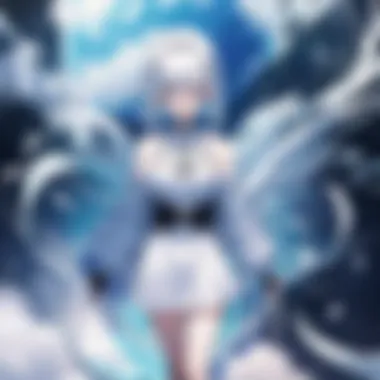
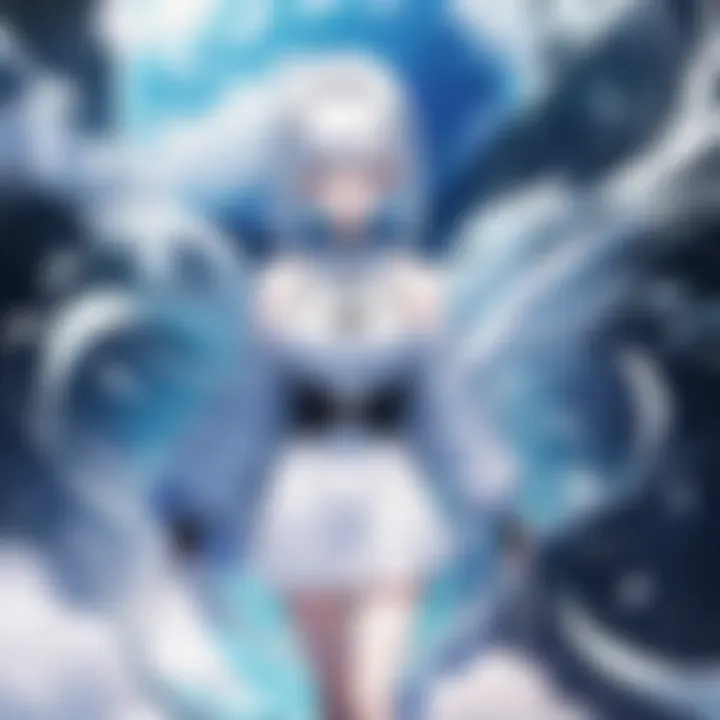
Supporting Characters and Their Roles
Supporting characters are vital in establishing the emotional and thematic weight of a narrative. They often serve functions that drive the protagonists' development and highlight the main themes of the story. In many cases, their backstories or motivations contrast with those of the protagonists, creating interesting dynamics within the narrative.
For instance, in No Game No Life, the supporting characters play pivotal roles in the strategic battles that define the series. Their unique abilities and personalities enrich the world-building and enhance the plot's complexity. They help create a layered narrative where every character adds value, making the entire experience more immersive.
Supporting characters also provide contextual contrast, adding to the protagonists' struggles. This helps develop the storyline and often serves as agents of change or insight, pushing the heroes or anti-heroes towards crucial decisions that shape the events in the alternative world. The intricate relationships among characters demonstrate how the complexities of human interactions can influence broader themes of identity and choice.
"Character dynamics are not merely added layers; they are the fundamental core of narrative engagement, urging viewers to ponder their own lives against the choices of fictional characters."
Thematic Exploration of Another Worlds
The theme of another world serves as a vital narrative device in anime and manga, richly contributing to the depth and appeal of these stories. Through exploring different realms, creators can convey complex ideas about identity, society, and the human condition. This exploration enables the storytelling to transcend mere escapism; it provides a mirror to our reality, allowing audiences to reflect on their own experiences.
In many ways, these alternate realities challenge viewers to reconsider their perspectives on life. The conflicts, triumphs, and relationships developed in these worlds often parallel real-world issues. By engaging with these narratives, audiences can gain insights into the nature of existence, morality, and personal growth.
Identity and Self-Discovery
The theme of identity is prominently featured in many anime and manga set in other worlds. Characters often find themselves in situations that force them to confront their true selves. In these narratives, the journey is not just about external adventures but also about internal transformation.
Characters like Subaru from Re:Zero undergo significant changes as they face the consequences of their choices. The struggle with self-doubt and the quest for acceptance reflect a universal human condition. This resonates with viewers who see their journeys echoed in these alternate experiences.
Moreover, the notion of self-discovery is often tied to the choices characters must make in unfamiliar settings. They encounter challenges that test their beliefs and morals. These experiences frequently lead to self-realization, ultimately allowing them to grow beyond their initial limitations.
Societal Commentary and Reflections
The thematic exploration of alternative worlds frequently serves as a medium for societal commentary. Through the lens of fantastical narratives, creators can critique contemporary issues, including inequality, prejudice, and the complexities of social structures. For instance, series such as Sword Art Online not only delve into virtual experiences but also touch upon themes of escapism and isolation in modern society.
These worlds often exaggerate societal norms or create new systems altogether. By doing so, they hold a mirror to current values and beliefs. Characters may thrive or struggle within these constructs, leading to deeper discussions about the implications of their decisions.
An insightful commentary emerges from these narratives, addressing the flaws within our reality while prompting the viewers to reflect on their roles in society. Each character’s plight opens dialogues about justice, governance, and the social contract.
In summary, the thematic exploration of another worlds contributes to the richness of anime and manga. Through identity and societal reflections, these narratives provide valuable perspectives that challenge norms and encourage personal and collective contemplation. Whether one identifies with the protagonist's journey or critiques the societal structures presented, the interplay between fantasy and reality remains a poignant element in this genre.
World-Building Techniques
In the realm of anime and manga, world-building serves as a critical foundation, providing the backdrop against which narratives unfold. This discipline involves crafting detailed settings that feel authentic and immersive. The effectiveness of world-building significantly influences how viewers and readers connect with the story and its characters. It is not merely about assigning cool names or quirky species but rather about establishing a coherent environment where every element, from geography to social structures, contributes to the overall narrative.
The benefits of effective world-building are manifold. Well-crafted worlds can engage audiences on a deeper level, inviting them to explore the intricacies of society, culture, and conflict. Furthermore, strong world-building helps to create a sense of realism that allows the fantastical elements to coexist credibly with everyday experiences. This balance can enhance the escapism that is a hallmark of the genre, drawing audiences into realms where the impossible becomes possible.
However, there are several considerations one must keep in mind when engaging with world-building in anime and manga. For instance, creators need to strike a balance between detail and clarity. Overly complicated worlds can alienate audiences, while overly simplistic settings may fail to captivate. A gradual revelation of the world through plot and character development often proves more effective. The aim is to have an unfolding tapestry that both surprises and satisfies the audience.
Creating Believable Worlds
To create believable worlds in anime and manga, attention to detail is crucial. This involves not only geography and climate but also cultural practices, governance systems, and economies. Characters' interactions with their environment often serve as a lens through which viewers understand the complexities of the narrative.
Developing a well-thought-out political system, for example, can add layers of conflict and motivation that enrich the story. Consider how the kingdom structures in Sword Art Online and Re:Zero intertwine with their respective plots, providing various stakes for the characters.
Additionally, the visual element plays a fundamental role in establishing the believability of a world. The art style, color palettes, and architectural designs contribute to how audiences perceive the setting. An artist’s eye for detail can transform a simple backdrop into a vivid landscape filled with life and history, bridging the gap between reality and fantasy.
Lore and History: Enhancing Depth
Lore and history are essential components of world-building that provide depth and context in anime and manga. These elements allow audiences to grasp the past events that shape characters' current motivations and the societal norms they operate within.
Crafting a timeline of significant events, such as wars, migrations, or treaties, helps to flesh out the world. For instance, in That Time I Got Reincarnated as a Slime, the intricate backstory of different species and societies comes together to build a rich narrative that enhances character interactions.
Furthermore, integrating myths and legends can give additional layers of meaning. When characters reference old tales, it not only serves as a storytelling device but also enriches the cultural fabric of the world. These narratives often reveal insights into the values and beliefs of different societies, providing audiences with an opportunity to reflect on their own world through the lens of fiction.
"A well-constructed lore is more than just backstory; it can become an integral part of the narrative structure itself."
In sum, the techniques of world-building are fundamental to conveying the thematic and narrative essence of anime and manga. They offer tools that enhance storytelling while ensuring that alternate worlds resonate with viewers and readers alike.
Cultural Impact of Another World Genres
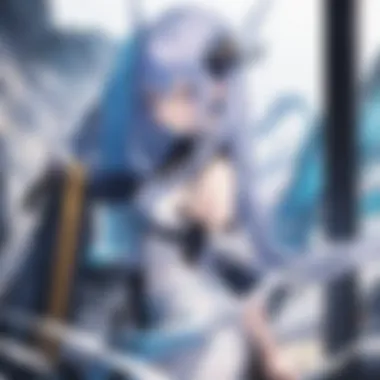
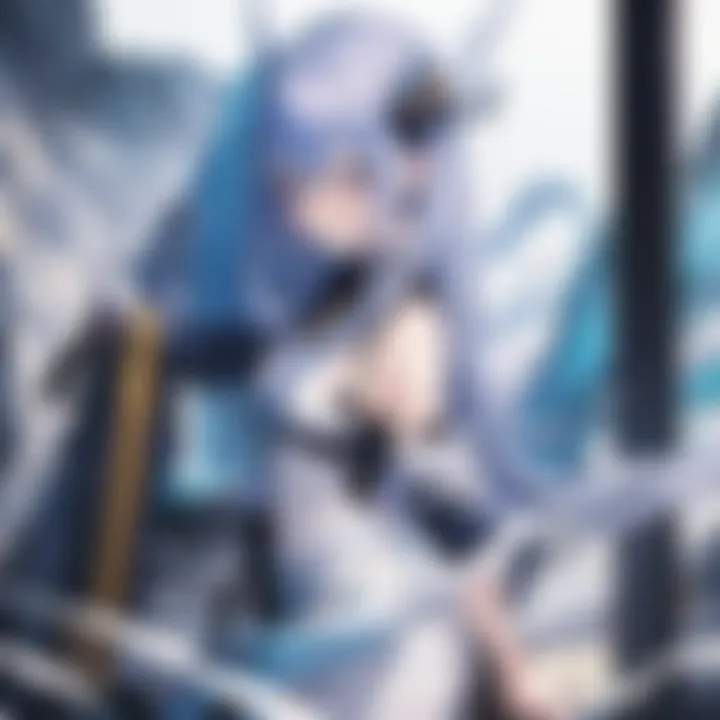
The cultural impact of otherworldly genres in anime and manga is both profound and multifaceted. These narratives do not merely entertain; they serve as mirrors reflecting the complexities of society. In exploring alternate realities, these works challenge traditional norms and values and often invite audiences to question their own realities. The themes present in these stories resonate particularly with modern issues, encouraging viewers to contemplate identity, belonging, and the struggles against societal expectations.
Through fantastical narratives, anime and manga can offer commentary on political, social, and emotional landscapes. Fans often find themselves drawn to these worlds not just for escapism but for their relevance and connections to the real world.
"It is the power of storytelling that reshapes our understanding of ourselves and the society around us."
Influence on Japanese Society and Globally
The influence of otherworldly genres extends beyond Japanese culture, impacting global society as well. Within Japan, these narratives have significantly shaped youth culture, sparking conversations on topics like mental health, isolation, and resilience. For many young people, the characters and their journeys provide a source of inspiration. They showcase struggles similar to what young adults face today—becoming lost in anonymity, battling personal demons, and ultimately finding purpose.
Globally, anime and manga summon a diverse audience. The intricate world-building and character development highlight universal themes that resonate across varied cultures. These stories often introduce aesthetics and philosophies that differ from Western norms, allowing for cross-cultural exchanges. Global adaptations and fan translations increase accessibility, contributing to a rich tapestry of shared experience. This globalization of anime and manga fosters a broader understanding of different cultures, further solidifying their place within international entertainment.
Reception and Adaptations in Different Media
The reception of otherworldly genres largely depends on how well they adapt to different media formats. Successful adaptations often succeed in retaining the original narrative's essence while catering to new audiences. For example, works like Sword Art Online have expanded from a light novel to anime, video games, and even manga, creating a cohesive and immersive franchise. Each adaptation offers a unique lens through which fans can engage with the story.
Different media adaptations also play a significant role in critiquing and exploring the themes inherent in these narratives. The animated format allows for vibrant visuals, while novels delve deeper into character motivations and world-building. Furthermore, adaptations like live-actions not only reach broader audiences but also invite critique regarding cultural representations.
The dynamic interplay between source material and various adaptations illustrates the depth and adaptability of otherworldly narratives, making them a significant and evolving part of modern entertainment. In turn, these adaptations inspire further creation, resulting in a feedback loop of innovation and cultural commentary.
Audience Reception and Critique
Understanding audience reception and critique is essential when examining anime and manga that delve into the theme of 'another world.' Both the fandom and the critical community profoundly shape how these narratives are engaged and perceived. Evaluating the responses from viewers and readers provides a lens through which one can better understand the significance of these stories in contemporary culture.
Fandom and Community Dynamics
The fandom culture surrounding anime and manga plays a critical role in influencing both the popularity and reception of various series. Fans form communities that foster discussion, analysis, and even debate, offering spaces for ideas to flourish.
Fans often express their enthusiasm through various platforms, such as Reddit and Facebook, where they can share interpretations and personal experiences linked to specific shows or manga. These interactions enrich the overall understanding of the narratives being explored.
- Shared Experiences: Fans reflect on how the themes resonate with their lives, offering personal anecdotes that relate back to major story arcs or character developments.
- Creative Output: Many fans create fan art, fan fiction, and videos that explore their favorite series from unique angles. This creative engagement can alter perspectives on the narratives and encourage deeper discussions about their themes.
- Conventions and Events: Anime and manga conventions serve as gathering places for fans. Here, discussions about the impact of these narratives take center stage, fostering a community of enthusiasts eager to explore every facet of their favorite series.
Critical Perspectives on Genre Tropes
Within the realm of critique, several established tropes emerge in the 'another world' genre. Critics analyze these conventions to uncover underlying messages or recurring themes that speak to broader societal issues. Genres often reflect cultural anxieties or desires, and in this case, the explorations in alternate realities may represent both escapism and confrontation with real-world problems.
Key tropes include:
- The Ordinary Person Turned Hero: This archetype explores self-discovery. Viewers often resonate with protagonists who begin as common individuals but evolve through their adventures.
- Power and Responsibility: These narratives frequently tackle concepts of authority and ethics. Characters navigate complex moral dilemmas, which often mirror societal expectations and pressures.
- Friendship and Betrayal: Relationships in otherworldly settings often find ways to reflect real-life dynamics. Analyzing friendships and conflicts helps to reveal character motivations and thematic depth.
In summary, the evaluation of audience reception and critique of anime and manga within the 'another world' genre underscores the importance of community engagement and critical analysis. By paying attention to both fan perspectives and critical discussions, one gains insights into how these narratives are embraced and understood, and how they challenge or reflect societal norms.
Future Directions in Otherworldly Narratives
The landscape of otherworldly narratives in anime and manga is constantly evolving. This section highlights the significance of understanding future directions in this genre. As technology advances and global cultures intermingle, the narratives are likely to adapt, pushing boundaries of creativity and thematic exploration. A forward-looking perspective can offer insights into emerging trends and genres. This will benefit creators, as well as fans who actively engage with the medium. Understanding where these narratives are heading can deepen appreciation and speculations about potential storylines and character arcs.
Emerging Trends and Innovations
In recent years, several emerging trends have marked the progression of otherworldly anime and manga. First, the incorporation of technology has set new standards. Titles like Sword Art Online utilize virtual reality, blending fantasy with elements of real-world technology. This trend reflects contemporary societal fascination with technology and escapism.
Second, there's a noticeable shift towards greater female representation in lead roles. Traditionally male-dominated narratives are giving way to powerful female protagonists. Series such as The Rising of the Shield Hero feature diverse character arcs that resonate with a broader audience. This shift indicates a more inclusive approach in storytelling.
Furthermore, a blend of genres is becoming increasingly prominent. Series are not strictly defining themselves within fantasy but are merging with elements of science fiction, romance, or horror. This innovation creates layered narratives that engage the audience on multiple fronts.
- Diverse Targeting: Different age groups and demographics are being considered, leading to varied themes and storylines.
- Interactive Narratives: Some series now offer reader-driven choices or multiple endings, embracing the audience's role in story development.
These trends are shaping the future, indicating a landscape that is rich in possibility and complexity.
Potential for Cross-Genre Exploration
Cross-genre exploration is an avenue that promises fresh narratives and broader audiences in the realm of anime and manga. The blending of fantasy with other genres not only enriches the storytelling experience but also appeals to a diverse audience. For example, combining elements of mystery with fantasy can heighten suspense and keep viewers or readers engaged.
Moreover, No Game No Life showcases a seamless blend of strategy and fantasy, inviting analytical viewers to dissect the intricacies of game mechanics alongside character development. This multifaceted approach can expand viewer engagement and interest in complex narratives.
By engaging with genres such as horror within the fantastical realm, creators can tap into emotional depths. This can be seen in The Promised Neverland, where horror elements underpin a fantasy narrative, challenging the boundaries of conventional storytelling.
As anime and manga continue to evolve, the potential for cross-genre exploration invites creativity and innovation. It encourages storytellers to craft narratives that break traditional molds and limits, resulting in unique and thought-provoking experiences for the audience.
"The future of otherworldly narratives is not merely defined by its past but is continuously being remade through innovative ideas and cultural shifts."
In summary, future directions in otherworldly narratives will likely reflect a blend of technology, innovation, inclusivity, and genre fluidity, making it an exciting time for the medium.







